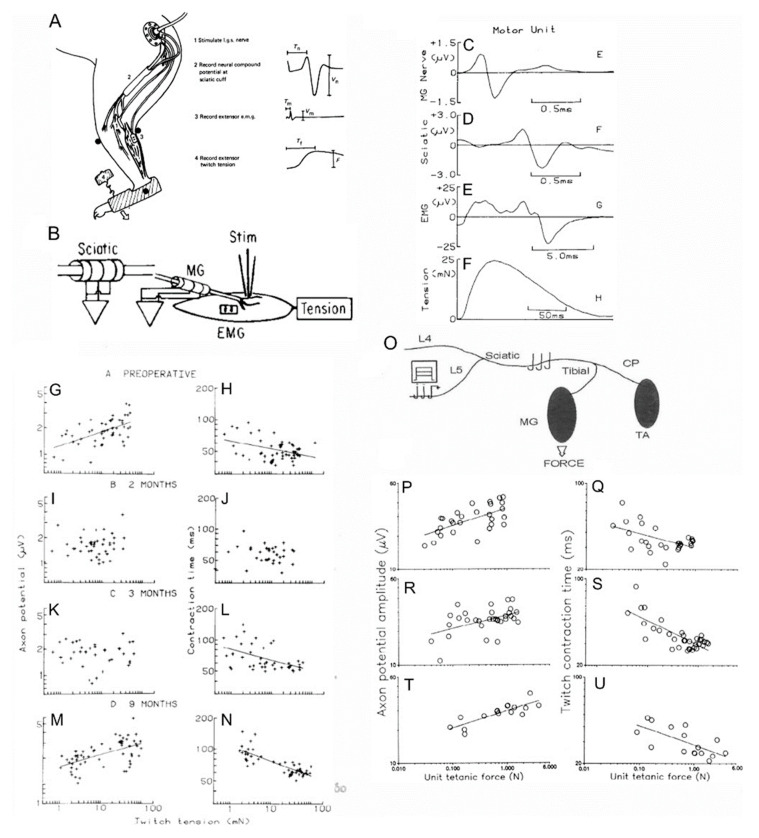Figure 8.
Size relationships in cat medial gastrocnemius (MG) muscles after complete and partial nerve injuries. At regular intervals of 10–14 days, the cat was anesthetized with fluorothane. The foot of the operated hindlimb was encased in a special boot that was attached to a force transducer to record isometric muscle and motor unit (MU) forces in response to stimulation of the MG nerve via nerve cuff electrodes (A) and in response to stimulation of single MG nerves via a needle electrode inserted through the skin into the endplate region of the MG muscle (B). The MU action potentials on the MG (C) and sciatic (D) nerves were recorded from implanted nerve cuff electrodes. The MU electromyographic action potential (EMG; E) was recorded from EMG pad electrodes on the muscle surface and the twitch tension (F) was recorded with the force transducer attached to the boot. MU action potential amplitude was directly correlated with the twitch tension of the innervated muscle fibers (G) and inversely correlated with the contraction times of the twitch contractions (H). These correlations are in accordance with Henneman’s size principle (see text). The inverse relationship demonstrates that force increases as contraction times become shorter with the fast MUs being the most forceful and the slow MUs being the least. Early during reinnervation, the size relationships were lost when each nerve reinnervated muscles fibers of different histochemical types(I,J) but they returned with time (K–N) as the heterogenous muscle fibers were respecified by their new motoneuron innervation (not shown). In normal (O,P) and partially denervated (R–U) MG muscles after transecting the L7 root, the size relationships were retained as the forces increased when the partial denervation removed 50% and 80% of the nerve supply to the muscles. All correlations in which lines are drawn were statistically significant at the 0.05 level. Adapted from [112,125,133].

